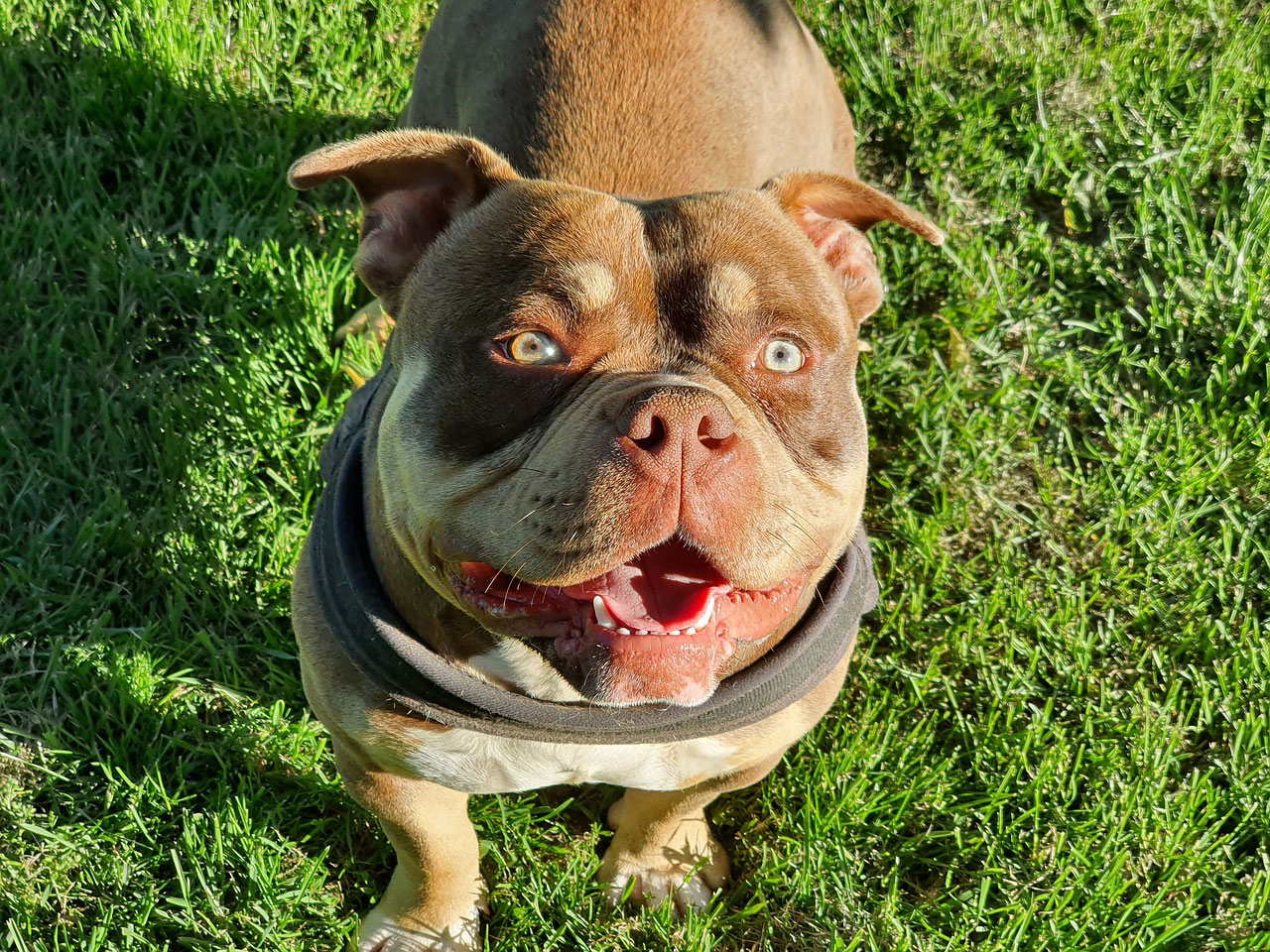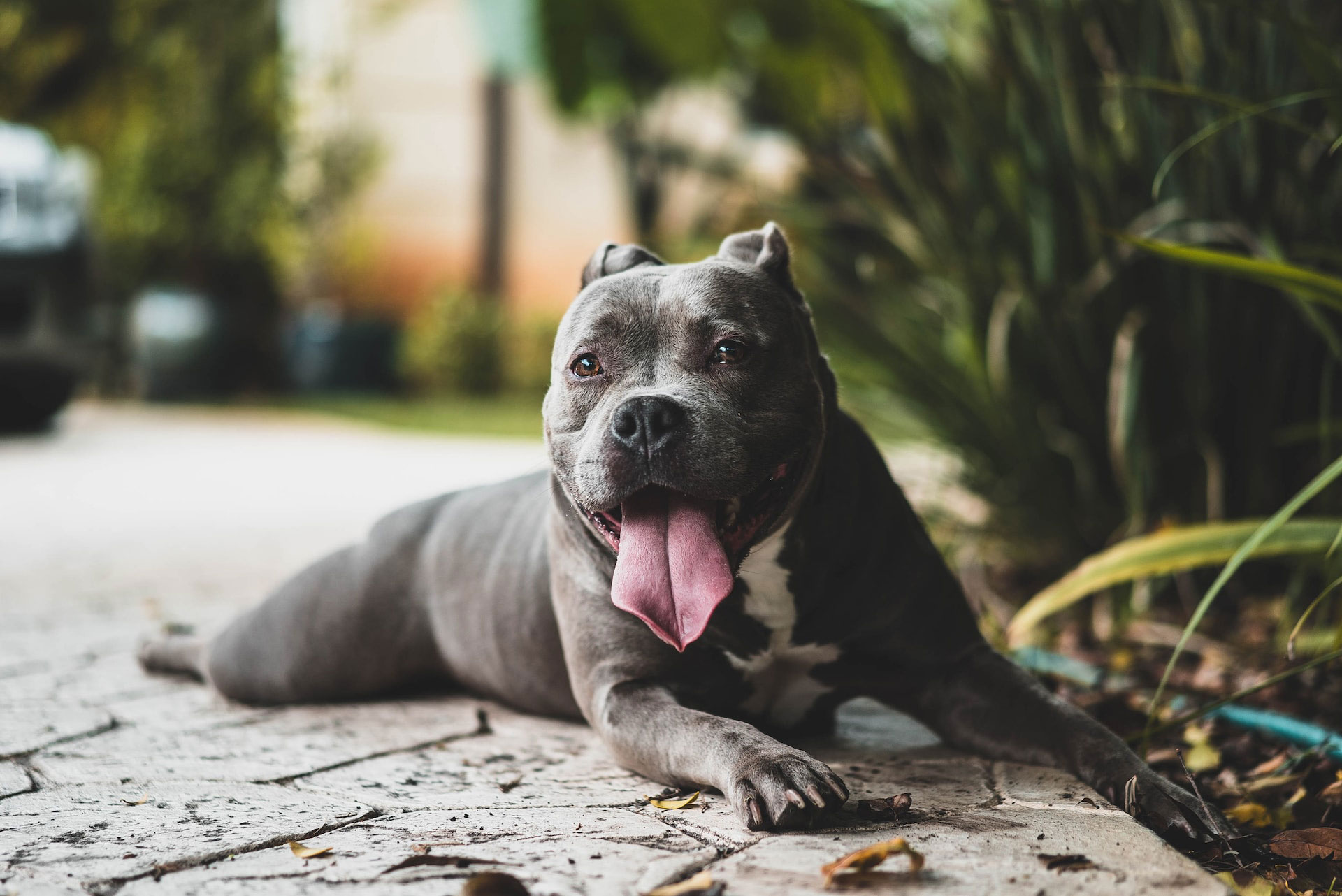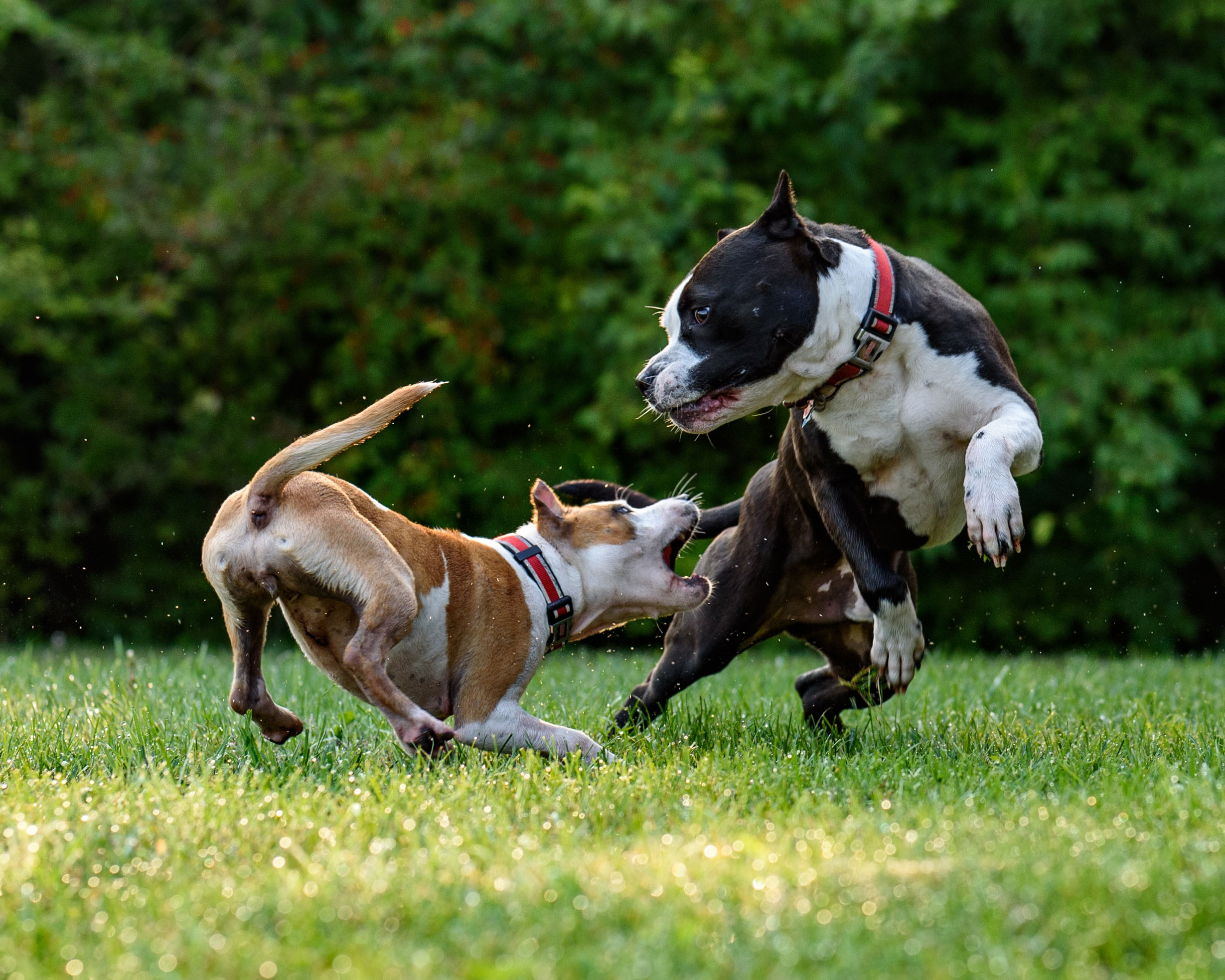If you’re considering adding a new canine companion to your family that is both loving and protective, the American Bully dog breed is worth considering. With its unique characteristics, temperament, and care essentials, the American Bully makes an ideal family companion. In this article, we will provide you with all the information you need to know about this magnificent breed.
- American Bully bred for companionship, not fighting.
- Recognized by various kennel clubs like ABKC.
- Needs early socialization to prevent aggression.
The information provided herein is for informational purposes only. Please refer to our disclaimer for more details..
Quick Facts:
- The American Bully is a dog breed native to the United States of America known for its unique physical characteristics and temperament.
- Developed by cross breeding of Bulldogs with Terrier type breed.
- Has a strong bite force of 305 psi and is ranked among the highest bite strength.
- They don’t have a locking jaw, a common myth among the general public. The jaw anatomy has no locking feature.
- It is an ideal family companion and watchdog due to its loyalty and protective nature.
- Like most bulldogs and terriers, they have a Brachycephalic skull anatomy, characterized by a short snout and broad face with narrow nares.
- The breed has distinct physical features, including a stocky yet strong and muscular build with a short, glossy coat.
- The young ones gain weight quickly if are healthy and well fed. Puppies are born with a weight of around 1 pound and by the time a pup reaches 1 month of age it weighs 7 to 10 pounds.
- Regular exercise, grooming, and proper health care are essential for their well being.
- Lifespan: 8 to 14 years
- Health issues common to this breed: Brachycephalic Airway Syndrome, Skin allergies, Eye problems and Hip Dysplasia.
- Is prone to develop dog aggression towards other dogs and people due to the genetic relevance with the pit fighting parent breeds. Therefore, owners are advised to start socialization and training from an early age to ensure loyalty and stability.
American Bully Breed Overview
The American Bully is a unique breed that originated in the United States during the 1990s. It was created by crossing various bulldog and terrier breeds, including the American Pit Bull Terrier and the American Staffordshire Terrier.
The bully breeders have acknowledged mixing different breeds in some of the blood lines like American bulldog, English Bulldog and Olde English Bulldogge. Unlike its ancestors, the American Bully was specifically bred to be a companion and family dog with a lower prey drive, rather than for traditional working roles.
While the American Pit Bull Terrier and the American Staffordshire Terrier were bred for dogfighting, the American Bully was not. Instead, it was meant to be a companion dog that would be gentle, friendly and loyal to its family. The American Bully Kennel Club (ABKC) recognized and standardized the breed in 2004.
The breed gained popularity among dog enthusiasts due to its unique characteristics. Many breeders began breeding American Bullies, and several breeding programs emerged to develop the breed further spreading the breed to as far as Europe and Asia.
Today, this native American breed is recognized as a distinct breed by various kennel clubs, like European Bully Kennel Club (EBKC) and United Kennel Club (UKC).
Breed Characteristics and Appearance
This bully breed is known for its unique and distinctive physical appearance. Here are the key characteristics that define the breed:
- Stocky Build: The American Bully has a muscular body and a well-defined physique. It possesses a powerful and sturdy body structure, showcasing its strength and athleticism.
- Broad Head: The broad head of the American Bully is one of its defining features. The breed’s head is proportionate to its body size, exuding strength and presence. A Brachycephalic skull anatomy with typical broad flat faces and short muzzle. Ears are erect and pointy with a curl on tip.
- Short, Glossy Coat: have a short and shiny coat that requires minimal grooming. This low-maintenance coat adds to their overall appeal and showcases their sleek appearance. Coat has a variety of colors like Black, White, Brown, Grey, Blue, Fawn and Red.
- Strong Jaw: One of the daunting features of this dog is its strong large jaw with an impressive bite force of 305 PSI, a force generated by strong cheek muscles.
Size Variation:
American Bullies come in different sizes, catering to a range of preferences. The breed is categorized into Standard, Classic, Pocket, and XL sizes. This size variation allows individuals to choose a Bully that fits their living arrangements and lifestyle.
- Breed standards demand a correct proportion of weight to body stature. The proportion of weight to height can vary within the individuals of the same class.
The height and weight of the bullies can vary within each size classification. On average, they can range from 13 to 21 inches in height and weigh between 70 to 120 pounds, depending on the specific size variation. Pockets are 14 to 17 inches tall and weigh around 20 kg, whereas, XL is 20 inches tall and can weigh around 40 kg or more.
Temperament and Personality
The American Bully is known for its happy and outgoing temperament. This breed is a loyal and protective companion, always ready to shower their family with affection. With their good-natured and amusing personality, they can bring joy and entertainment to any household. They are eager to please their owners and thrive on positive reinforcement during training sessions.
These canine companions have a natural inclination to be friendly and tolerant towards children, making them an ideal choice for families. Their protective nature ensures that they will go to great lengths to keep their loved ones safe. This breed’s loyalty and devotion make them excellent family dogs, forming deep bonds with their owners and creating a lasting companionship.
Care Essentials for the American Bully
Proper care is vital for ensuring the well-being of your dog. By following these essential guidelines, you can help your beloved pet lead a healthy and happy life:
Exercise
- They have moderate exercise requirements, Provide regular walks to your dog to maintain their overall mental and physical stimulation.
- Take them for daily walks, allowing them to burn off energy and stay fit, indulge in playful activities like fetch ball play to provide them with opportunities for mental stimulation and to strengthen the human-dog bond.
Grooming
- Minimize grooming needs with regular brushing sessions to keep their short, glossy coat looking its best.
- The short coat of this breed requires low maintenance, occasional brushing of the coat using a bristle brush can help prevent matting.
- Bathe your bully as necessary when they get dirty to keep them clean and hygienic.
- Ear cleaning once a month keeps the ear clear of excessive wax and prevents infection.
- Dental care includes regular brushing to prevent the buildup of plaque that can create tartar.
Living Conditions
- This breed is adaptable and can thrive in various living conditions, including urban apartments and large living spaces with yards.
- However, they tend to thrive best in warm climates, so provide them with suitable living conditions accordingly.
By prioritizing exercise, grooming, health monitoring, and suitable living conditions, you will ensure that your pet receives the best care possible, setting the stage for a long and fulfilling life together.
Dog Training and Socialization
Training and socialization are essential components of raising an American Bully. This intelligent breed is eager to please, making training sessions enjoyable and effective. By establishing yourself as the pack leader, you can foster a successful relationship with your dog.
When it comes to training, consistency and positive reinforcement are key. Use rewards such as treats, praise, and playtime to motivate your Bully and reinforce good behavior. Focus on basic obedience commands like sit, stay, and come, gradually progressing to more advanced commands.
Socialization is equally important. Expose your dog to various environments, people, and animals from a young age to help them develop good behavior and a friendly attitude. Encourage positive interactions with other dogs and strangers, ensuring that your Bully learns how to navigate social situations confidently.
Here are some tips for training and socializing the dog:
Start training early: Begin training your Bully as soon as you bring them home. This will establish routines and boundaries from the start.
Be patient and consistent: Training takes time and repetition. Stay patient and consistent in your approach to help your Bully understand what is expected of them.
Use positive reinforcement: Reward your Bully with treats, praise, and playtime when they exhibit desired behavior. This will motivate them to continue behaving well.
Enroll in obedience classes: Consider enrolling your Bully in obedience classes to further their training and socialization. Professional guidance can be beneficial for both you and your dog.
Expose your Bully to various situations: Introduce your dog to different environments, including parks, busy streets, and gatherings. This will help them adapt and feel comfortable in different settings.
Monitor interactions with other pets: Supervise your Bully’s interactions with other pets, ensuring they are positive and well-mannered. Early exposure to different dogs can help prevent aggression or fear-based behavior.
Establish rules and boundaries: Achieve pack leader status, set clear rules and boundaries, dogs are pack animals they seek guidance, take advantage of that and lead your dog. Consistency will help them understand their place in the family hierarchy.
Provide mental and physical stimulation: Keep your dog mentally and physically stimulated with regular exercise and interactive toys. This will help prevent boredom and destructive behavior.
Remember, training and socialization are ongoing processes. Consistently reinforce positive behaviors and continue exposing your dog to new experiences throughout their life. By investing time and effort into their training and socialization, you can raise a well-behaved and sociable companion.
Health Considerations
Common health issues faced by owners rearing the bullies includes the following:
Eye Problems:
The bully breed specifically owing to their Brachycephalic anatomy, are prone to certain ophthalmic issues related to eyes like: Cataracts: cloudiness of the eye lens caused by the buildup of proteins in the lens. Other issues include corneal ulcers and progressive retinal atrophy ( a degenerative disease that affects the photoreceptor cells in the retina causing blindness).
Skin Issues:
Skin allergies from food and environmental allergens are common in this breed, moreover, they are prone to develop skin infections like Dermatitis and need regular health visits and a balanced diet to keep their skin healthy.
Respiratory Problems: Brachycephalic Airway Syndrome
A particular set of airway syndromes that affects the Brachycephalic breeds, this involves the anatomical narrowing of the nares and airway passages that makes it difficult to inhale and exhale air out of the respiratory passage. This causes dyspnea: difficulty in respiration. It is advisable to detect such abnormalities earlier and take prompt steps like avoiding exertion and providing ventilation to such dogs to manage the condition.
Joint Problems: Hip Dysplasia and Elbow Dysplasia:
Hip and Elbow Dysplasia are common joint issues of the bully dogs and involve the lack of coherent growth of ball and socket joint during puppyhood, this creates joint laxity and further leads to degenerative joint disease causing issues with joint mobility and lameness.
American Bully as a Family Companion
This breed makes excellent companions for families if socialized and trained well. The breed is known for its loyalty, protectiveness, and friendliness towards family members, including children. With proper training and socialization, the American Bully can thrive as a loving and devoted family pet.
If you’re looking for a dog that will be deeply loyal to your family, the American Bully is an ideal choice. This breed has a strong bond with their owners and will always prioritize their family’s well-being.
The Bully’s protective nature makes it an excellent guardian for your loved ones. They will instinctively protect their family members from any potential threats, making you feel safe and secure.
Furthermore, they are friendly by nature and are eager to please and enjoy the company of their family members, including children. However, their interactions with children should always be supervised and children should be taught how to behave with the dog, avoiding clingy and irritating interaction.
Conclusion
The American Bully is a versatile and unique breed that makes an excellent family companion. With their distinct physical characteristics, such as a stocky build and broad head, they have an imposing yet affectionate presence. The American Bully’s temperament is known for being happy, outgoing, and loyal, making them a loving and protective addition to any household.
One of the key features is their adaptability to various living conditions. Whether in a spacious house or a cozy apartment, they can thrive as long as they receive regular exercise and mental stimulation. This breed’s easy-going nature also allows them to get along well with children, making them an ideal choice for families.
Proper care, training, and socialization are essential for the Bully’s well-being. They require regular exercise to maintain their physical and mental health. Additionally, establishing yourself as the pack leader through consistent and positive training methods will help foster a strong bond and ensure obedience. Socializing the American Bully from an early age will develop their friendly attitude towards people and other dogs.

 Image credits:
Image credits:  Image credits:
Image credits:  Image credits:
Image credits: 


-4
0